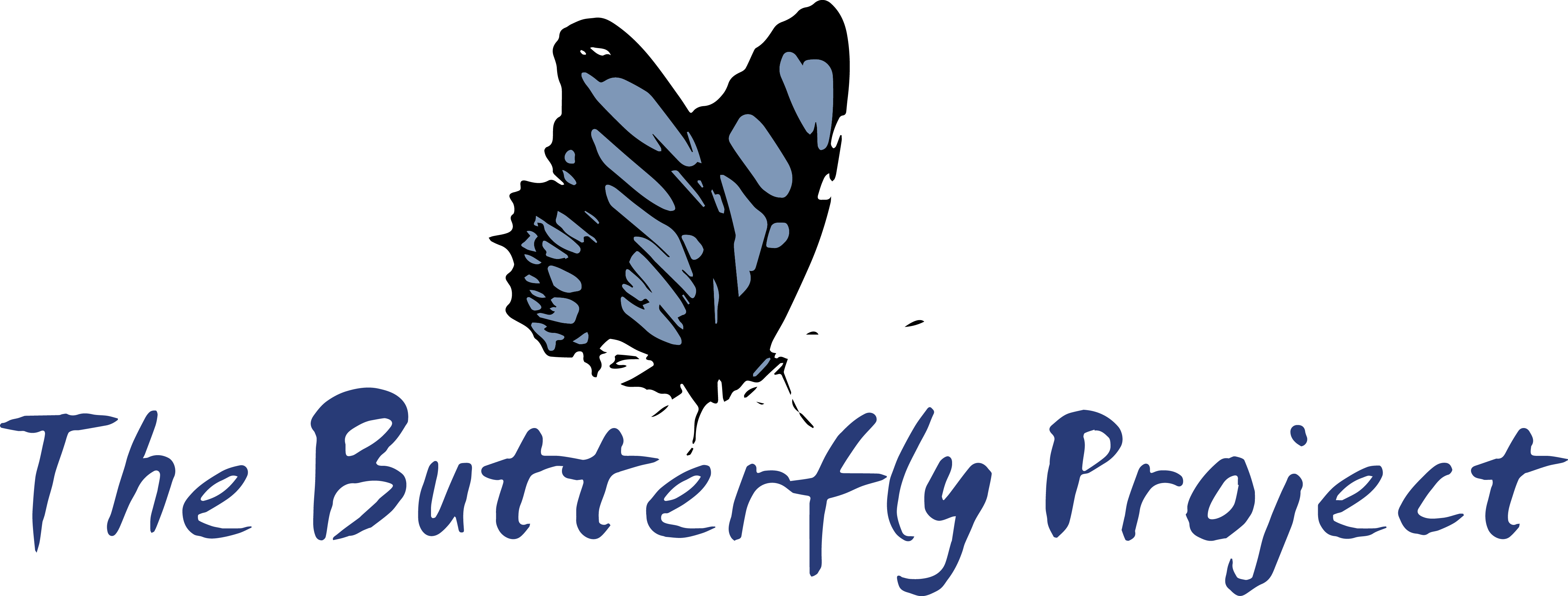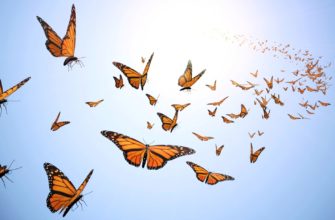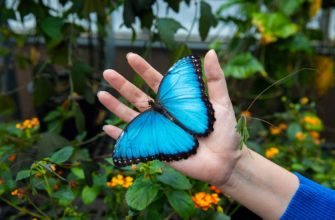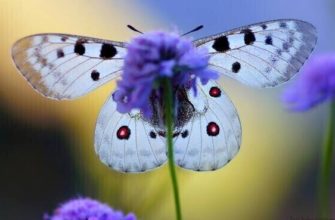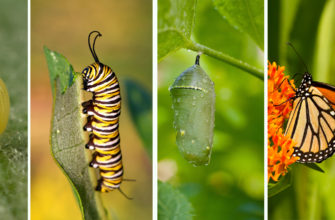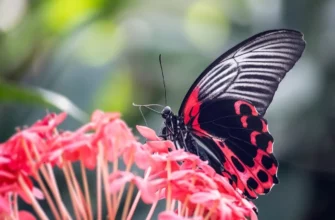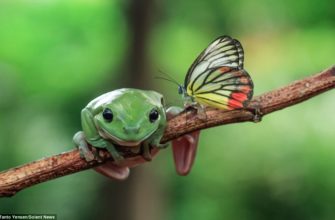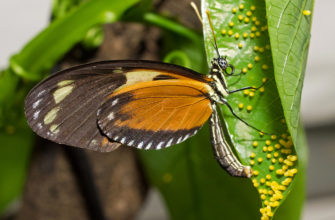Butterflies have a natural lifespan, which varies depending on the species. During their lifespan, they undergo various stages of metamorphosis before reaching adulthood. Once they become adults, their primary goal is to reproduce and continue the life cycle. However, as they age, their body functions start to deteriorate, making it harder for them to carry out their regular activities. Predators and harsh environmental conditions also contribute significantly to butterfly mortality rates.
As butterflies age and approach the end of their lifespan, they begin to slow down and spend more time resting. Their feeding habits change as well. While younger butterflies actively search for food sources, older ones tend to consume less and may even stop eating altogether as they approach death.
When a butterfly dies naturally, its wings will remain open in an extended position since it no longer has the energy to keep them closed. After death, the butterfly falls off wherever it was perched.
It is essential to remember that some human activities can negatively impact butterfly populations’ longevity and health. Habitat destruction, pollution, climate change, pesticides usage can all lead to increased mortality rates in mature butterflies or create conditions that are unfavorable for reproduction or healthy development from egg phase up until maturity.
Protecting natural habitats where these winged creatures thrive is crucial in ensuring we enjoy their beauty today and for generations to come.
Even butterflies can’t escape the inevitable – death by natural causes.
Natural Causes of Death for Butterflies

To understand the natural causes of death for butterflies, you need to explore different factors that contribute to their expiration. Old age and wear and tear on wings are one such factor. Predators and parasites pose another threat. In this section, we’ll explain the details of these sub-sections and discuss how each affects the longevity of a butterfly’s life.
Old Age and Wear and Tear on Wings
As butterflies age, their wings accumulate damage which leads to natural causes of death. Wear and tear on the wings eventually becomes too much for a butterfly to fly or hide from predators effectively.
The aging process in butterflies is accelerated by environmental factors such as high temperatures, drought, and habitat fragmentation. They also face wear and tear due to physical contact with predators or other objects during flight.
These factors contribute to the ultimate demise of a butterfly. As they age and lose their ability to fly and escape from predators, their chance of survival significantly decreases leading them towards natural causes of death.
It is essential to understand these natural causes of death in butterflies as they serve an important role in our ecosystem as pollinators. Without them, food production may be affected, leading to negative consequences for both humans and nature.
Looks like being a butterfly is a risky business; predators and parasites make it harder to fly free.
Predators and Parasites
Natural Enemies of Butterflies
Butterflies face a variety of natural enemies in their lifespan. These adversaries can broadly be classified into predators and parasites. Predators like birds, reptiles, and insects prey on adult butterflies while larvae are more vulnerable to parasitoids, such as wasps, flies, and nematodes that lay eggs inside the pupa.
Parasites are another major threat as they can reduce the butterfly’s lifespan or render them unable to fly. Internal or external parasites like bacteria, viruses, fungi, protozoans and mites feed on butterfly fluids.
Apart from predation and parasitism, environmental factors such as droughts, floods, heatwaves and cold snaps also pose significant challenges to butterflies’ survival. These challenges cause dehydration or stress-induced mortality in their delicate bodies.
To safeguard these enchanting creatures from natural threats such as predators and parasites there are measures one can take. Planting a butterfly-friendly garden with a variety of host plants will provide shelter and breeding grounds for butterflies while deterring pests by avoiding pesticides is another way to help protect these winged beauties.
Looks like being a delicate, winged beauty isn’t all it’s cracked up to be – butterflies have to worry about pesky diseases just like the rest of us.
Butterfly Diseases and Illnesses
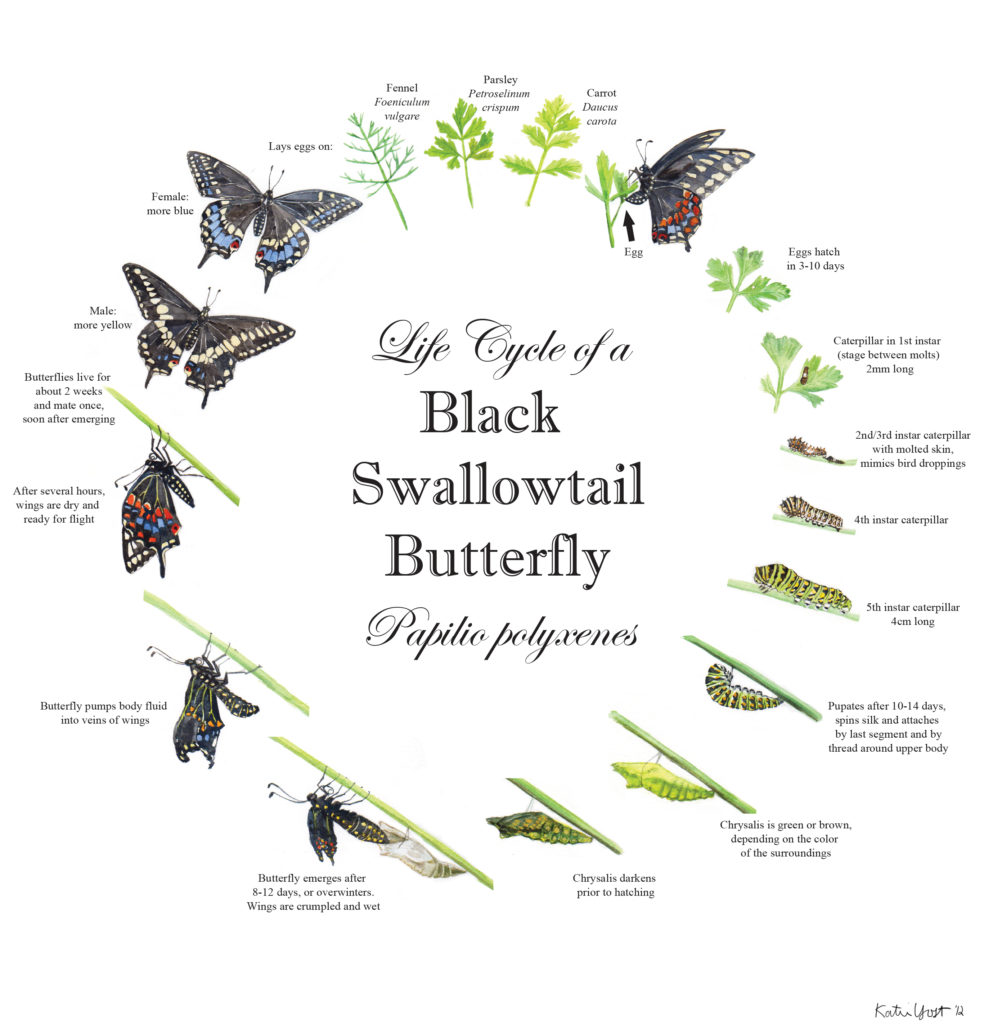
To learn about butterfly diseases and illnesses and their causes, delve into the sub-sections within this topic – Butterfly Diseases Caused by Parasites, and Butterflies Affected by Viruses and Bacteria. These sub-sections highlight the causes of various diseases in butterflies that eventually lead to their death.
Butterfly Diseases Caused by Parasites
Parasites and their deadly effects are a common cause of Butterfly Illnesses. Tiny mites, nematodes, protozoa and viruses can bring devastating harm to the delicate butterflies. These parasites latch on to the butterfly’s body, begin to feed on their blood or tissue, ultimately leading to death.
These diseases can manifest in a number of ways – from visible deformities like crumpled wings, discoloured scales, to stunted growth and stunted maturation. Apart from direct physical harm, some parasites carry lethal pathogens or bacteria that infect the butterfly’s system and weaken them over time.
Even though these infectious diseases are common amongst caterpillars, they tend to have more severe consequences for adult butterflies. Parasites like Ophryocystis elektroscirrha infect butterflies in the pupal stage only emerging when they become adults. Infected butterflies have reduced lifespan and reproductive capability, which poses a serious threat to their species.
A recent study revealed that parasitism rates were higher in urban areas than rural areas due to factors such as light pollution or exposure to pesticides. This brings us back full circle about how human interference is impacting our ecosystem even down to these beautiful creatures’ health.
I witnessed this first hand whilst tending my garden ornamental ponds home-grown with aquatic plant life. On a sunny afternoon whilst observing fluttering wings of Papilio cresphontes, I noticed one limp along with an injured leg. Upon inspection under magnification with a few more observations seemed troubled by parasitic Ophryocystis elektroscirrha infection indicating potentially short-lived lifetime.
Why did the butterfly go to the doctor? Because it had the fly flu!
Butterflies Affected by Viruses and Bacteria
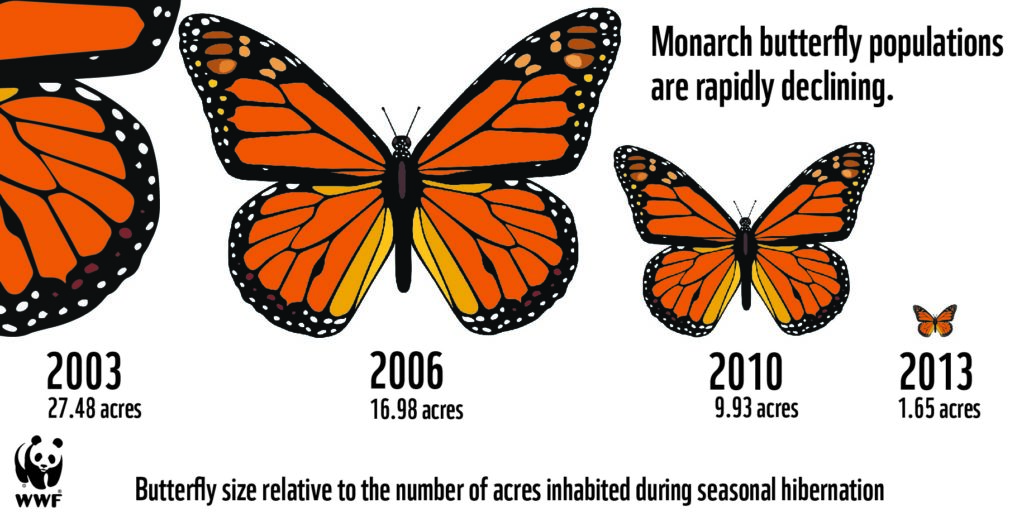
Butterflies are frequently affected by various viruses and bacteria that harm their health and well-being. These microorganisms can spread through contact with infected individuals or contaminated plants and surfaces. The consequences of infection range from minor symptoms to more severe illnesses that can even result in death for the butterfly.
Sadly, many species of butterflies are at risk due to such diseases caused by viruses and bacteria. These illnesses prevent them from growing, reproducing or surviving in their natural environments, which is ultimately detrimental to their survival.
One unique detail worth noting is how some species of bacteria live symbiotically with certain types of butterfly larvae; these bacteria help break down food for the caterpillar and boost their defense against predatory insects.
Historically speaking, a study conducted in 1976 on Monarch butterflies led to the first discovery of Protozoan organisms causing diseases in such insects. Since then, researchers have uncovered more potential causes for butterfly illnesses and continue to investigate ways to mitigate harmful impacts on these beautiful creatures.
Why worry about environmental effects on butterfly populations when they already have to deal with their own version of the plague?
Natural Environmental Effects on Butterfly Populations

To understand the impact of natural environmental effects on butterfly populations, it is important to consider the effects of climate change and seasonal changes, as well as habitat loss and fragmentation. These factors can have significant consequences for butterfly life cycles and overall populations. Let’s explore how each of these sub-sections can help us better understand the ecological challenges that butterflies face.
Climate Change and Seasonal Changes
The impact of shifts in weather patterns and habitual fluctuations has a profound effect on butterfly habitats. The biological processes that generate these changes must be taken into account as environmental factors can significantly alter the timing of insect development. This affects the availability of essential resources and survival rates.
Butterflies, like many other insects, are sensitive to seasonal changes. Increasing temperature anomalies can influence when they emerge from their winter refuges and instigate life stages such as courtship and reproduction. Unfavourable conditions resulting from climate change may diminish their chances of successful breeding, endangering already fragile populations further.
Unique butterfly species may require specific climatic conditions for optimal population growth, which are often dependent on the presence or absence of particular plant species. Reduced plant biomass due to droughts or flooding events will therefore have cascading effects on herbivorous insect rates.
In the biodiverse region surrounding the Amazon Basin in South America, the blue morpho butterfly is known to undergo significant population fluctuations depending on regional weather phenomena such as El Niño Southern Oscillation cycles. A single El Niño event can result in up to a 70% decrease in these butterflies’ populations over two years, demonstrating how vulnerable some species are to natural environmental effects.
Looks like butterflies are experiencing the ultimate truth in life – you don’t know what you’ve got until it’s gone, or in this case, until their habitat is lost and fragmented.
Habitat Loss and Fragmentation
The fragmentation and loss of butterfly habitats has significant impacts on their populations. Urbanization, deforestation, and climate change are major factors contributing to this issue. The destruction of natural habitats leads to smaller and isolated areas for butterflies with limited resources, making it difficult for them to survive.
In turn, these fragmented habitats can result in a decline in butterfly populations. As their ability to move between fragmented areas is limited and they struggle to adapt to new environments. This results in decreased genetic diversity and can lead to an increased risk of extinction.
Not only do butterflies require specific habitats but also different species need different environments. Some require open meadows while others rely on dense woods. When these habitats are lost or disrupted due to human interference, the survival of butterfly species is greatly threatened.
Ecological conservationists have made efforts to restore habitat corridors that allow butterfly populations to migrate between isolated fragments of land, thus increasing the chances of survival for various species.
One such example is the restoration project undertaken by the Xerces Society in California’s Central Valley. Their work is focused on improving habitat connectivity through planting native plants that provide food and shelter for various butterfly species.
The fragmentation and loss of butterfly habitats remain a pressing concern for environmentalists who believe that conservation efforts should be applied towards widening land bridges and conserving natural ecosystems for the continuous existence of healthy butterfly populations.
The only role humans play in butterfly deaths is accidentally swatting them while trying to take a selfie.
The Role of Humans in Butterfly Deaths
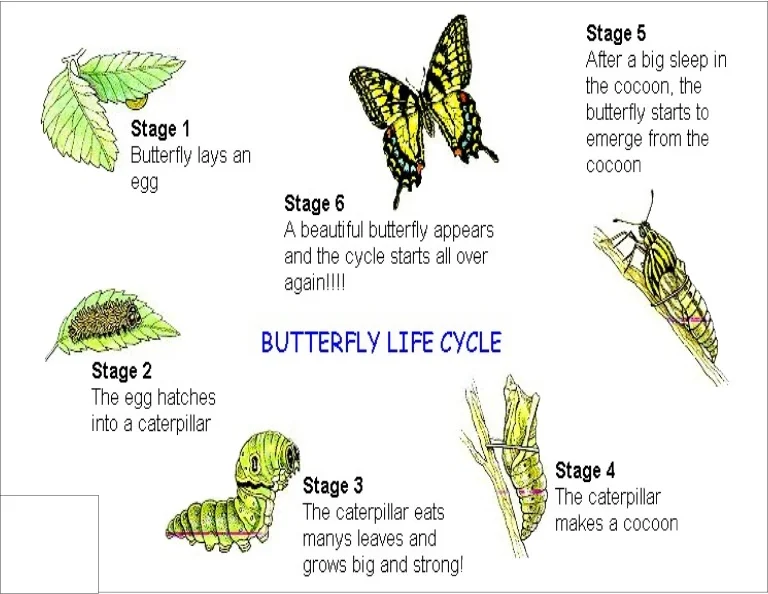
To understand the role of humans in butterfly deaths, it is important to know the various human activities that cause harm to butterfly habitats. Habitat destruction caused by human activities and the use of insecticides are two major factors that adversely affect the population of butterflies. In the following sub-sections, we will explore these issues in-depth.
Habitat Destruction Caused by Human Activities
Human actions lead to the devastation of natural habitats, resulting in a significant loss of biodiversity. Construction, agriculture, deforestation, mining and pollution are some causes leading to habitat destruction. Forests are shrinking as humans continue to expand their settlements and clear lands for resources and development. This habitat fragmentation affects the survival of species like butterflies who require specific plants to feed on and lay eggs. Land use changes driven by humans lead to less available resources for butterflies which negatively impacts their population growth.
Butterflies play a crucial role in pollination supporting food sources for humans as well as aiding ecosystem functions like nutrient cycling. Human involvement in butterfly deaths is an issue requiring attention as insufficient action will affect these delicate creatures’ survival.
According to a study conducted by the University of Florida, 4% of butterfly mortality is due to human activity, including car strikes and habitat destruction.
Using insecticides to kill butterflies is like using a shotgun to catch a moth.
Insecticide Use and its Adverse Effects
The use of insecticides is causing harmful effects on butterfly populations. These chemicals not only harm the target pests but also non-target insects, including butterflies. The adverse effects include toxicity and reduced reproductive success leading to population decline.
Insecticides have been a widely accepted tool for pest control, but their negative impact on the environment cannot be ignored. The indiscriminate use of insecticides is threatening the existence of many butterfly species, which play a crucial role in maintaining ecological balance. Moreover, the residues left behind on crops and plants can remain active for a long time, posing a risk to wildlife, including pollinators like butterflies.
To further exacerbate this issue, new generations of pesticides are more potent than previous ones, requiring less dosage to achieve maximum efficacy. Unfortunately, these newer pesticides are even more harmful to non-target insects, making them even more dangerous than before.
As responsible citizens and stewards of the environment, it is our responsibility to take action against this threat by embracing safer alternatives such as Integrated Pest Management (IPM) techniques that reduce pesticide usage. Failure to do so will lead to catastrophic consequences that will affect our planet’s biodiversity irreversibly.
Let us all take action today and make informed decisions that safeguard not only butterflies but also other beneficial organisms living alongside us in our natural world. Remember, sometimes the only thing standing between a butterfly and its natural death is a clumsy human.
Conclusion: The Importance of Understanding Natural Butterfly Deaths.
Butterflies are not just beautiful creatures, but they also play a crucial role in the ecological system. Understanding natural butterfly deaths is important not only for scientific research but also for conservation efforts. By understanding the causes and effects of butterfly deaths, we can better protect their habitats and preserve their populations.
One of the significant reasons for natural butterfly deaths is predation by other insects and animals. Butterflies may also die naturally due to diseases, old age or harsh weather conditions. Ultimately, understanding these natural deaths can give us an insight into the overall health of an ecosystem.
It is fascinating to note that some butterflies have adaptations to avoid predators while others rely on mimicry to appear unappetizing. Research shows that a few species of butterflies even hibernate during winters instead of dying off.
A study in Europe found that over 75% of butterfly populations had declined over a century due to environmental factors such as habitat destruction and climate change. Realizing the importance of understanding natural butterfly deaths and how human activities contribute to them can help us take necessary actions towards conservation policies.
According to The Xerces Society for Invertebrate Conservation, around one-third of North America’s native butterfly species are at risk of extinction due to habitat loss, pesticide use, and climate change impacts. Therefore, it is essential to understand natural butterfly deaths to safeguard their existence in our future generations’ world.
